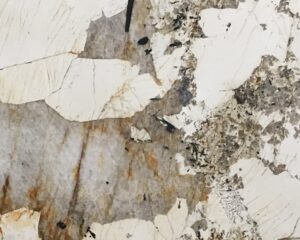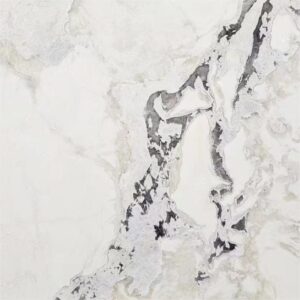When it comes to building materials that stand the test of time, STONE remains unmatched. Whether for architectural exteriors, luxurious interiors, or durable public works, natural stone is valued for its aesthetic appeal, durability, and unique patterns. But what exactly are the different types of natural STONE? How are they classified and named? What are the practical applications and distinguishing features of granite, marble, limestone, slate, and more?
In this comprehensive guide, we answer all your questions and explore the essentials of STONE materials—from geological composition to modern design usage. Brought to you by HRST 스톤, a leading name in the global stone industry.
Classification of Natural STONE Materials
According to the American Society for Testing and Materials (ASTM), natural decorative STONE is generally divided into six main categories:
- Granite (G)
- Marble (M)
- Limestone (L)
- Quartz-based Stone (Quartzite)
- Slate (S)
- Other Natural Stones (e.g., sandstone)
Each category has distinct properties and applications, making them suitable for different uses in construction and design
How Natural STONE Gets Its Name
Natural STONE names often reflect a combination of factors:
- Color and Pattern: For example, names like “Golden Spider” or “Ink Vein” depict visual characteristics.
- 기원: Many stones are named after their places of origin, like “Indian Black” or “Brazilian Green.”
- Marketing Appeal: Names are also chosen for their poetic, symbolic, or exotic flair, such as “Life’s Origin” or “Buddha’s Light.”
Note: Some stone names can be misleading. For instance, “French Beige” may actually come from Indonesia.
Key Mineral Compositions in STONE
Natural stones are composed of various minerals formed through geological processes. Some of the most common include:
- 석영
- Feldspar
- Mica
- Calcite
- Dolomite
- Serpentine
These minerals determine the stone’s hardness, porosity, appearance, and chemical resistance.
Common Types of STONE and Their Features
화강암
Composition: Quartz, feldspar, and mica (Quartz 20–40%, Feldspar 40–60%)
특징:
- High hardness and strength
- Low porosity and water absorption
- Resistance to acid and weather
- Difficult to process but offers long-lasting shine
애플리케이션:
- Interior flooring and walls
- Outdoor paving and monuments
- Bridges, foundations, piers
대리석
Composition: Calcite, dolomite, serpentine
특징:
- Softer than granite
- Unique, flowing patterns
- Higher porosity, easier to process
애플리케이션:
- Sculpture and decorative elements
- Countertops, bathrooms, and feature walls
Limestone
Composition: Predominantly calcite
특징:
- Soft and relatively easy to carve
- Highly reactive with acids
- Warm tones (gray, cream, beige)
애플리케이션:
- Exterior facades, fireplaces
- Traditional and classical architecture
Quartzite vs. Quartz Stone 
- Quartzite: Natural metamorphic rock, very hard and resistant
- Quartz Stone (Engineered): Man-made from over 90% quartz mixed with resin
Key Difference: Quartzite is natural; quartz stone is artificial.
Slate
특징:
- Formed by sedimentary compression
- Cleaves easily into sheets
- Dark, earthy tones
애플리케이션:
- Roofing, flooring, outdoor paving
Artificial Stones and Mosaics
- Artificial Stone: Made using resins, pigments, cement, and stone particles
- Mosaic Tiles: Often produced using leftover or specially cut stones
Types of Stone Mosaic:
- Molded Mosaics
- Small Particle Mosaics
- 3D Textured Mosaics
- Broken Surface Mosaics
- Carpet-Style Mosaics
- Castle Bricks
자주 묻는 질문(FAQ)
Q1: Is granite better for outdoor use than marble?
A: Yes. Granite is less porous, more weather-resistant, and better suited for external applications.
Q2: How can I tell if a stone is natural or man-made?
A: Natural stones have irregular patterns and may contain mineral veins. Man-made stones often show air bubbles or mold lines.
Q3: Are all stone names tied to their country of origin?
A: Not always. While many are, some popular names may be creatively chosen for appeal rather than accuracy.
Q4: What are the advantages of using natural stone in interior design?
A: Unique textures, timeless beauty, eco-friendliness, and added property value.
Q5: What surface finishes are available for stone?
A: Polished, honed, brushed, flamed, and water-washed (e.g., water-jet finish adds texture using high-pressure water).
Design Classification – Aesthetic Perspective
Besides geological types, stones are often grouped by color tones in architectural design:
- White Series
- Beige/Yellow Series
- Gray Series
- Blue Series
- Green Series
- Red Series
- Brown Series
- Black Series
- Specialty Colors (multi-tone or iridescent)
This helps designers match stone aesthetics with the overall color palette of the space.
Why Choose HRST STONE?
- 🌍 Global Reach: We source and supply premium quality stones worldwide
- 🏭 Direct Factory: In-house production ensures competitive prices
- 🛠️ Customization: Tailor-made solutions for residential and commercial projects
- 🎨 Design Support: A wide variety of patterns, colors, and finishes
- 📦 Reliable Logistics: Fast delivery and international shipping
HRST 스톤 brings nature into your life—elegantly and sustainably.
결론
Understanding the world of STONE is more than knowing names—it’s about appreciating history, geology, and design. From granite’s strength to marble’s elegance and quartzite’s brilliance, each STONE tells a story.
So, what’s the right STONE for your project? That depends on your needs, vision, and the expert advice from industry leaders like HRST STONE.
✨ Explore more: www.quartzite-stone.com
📩 Email: assistant@hrststone.com
📱 WhatsApp: +86 13685922793








